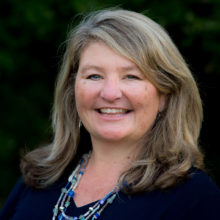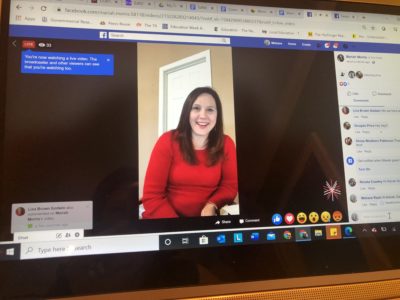
On Thursday, March 12, the Chapel Hill-Carrboro City Schools (CHCCS) and Orange County Schools became the first district in the state to announce district-wide school closures due to coronavirus. Later the same day, Durham Public Schools joined them. Two days later, on Saturday, March 14, the governor announced the closure of all North Carolina schools for at least two weeks.
This article describes some of the actions taken in CHCCS, Orange County, and Durham to prepare for the impact of closing their school buildings to students, almost overnight. What follows is both a window into these three communities’ first steps to come together to confront this crisis and a guidepost to others actively preparing to move beyond school as we know it.
Kansas has closed schools for the year and California has forecast the same; New York City and Boston have closed schools until April 20 and April 27, respectively; and the CDC and The White House have recommended against gatherings of more than 10 people for at least eight weeks. Preparing to face this new reality, districts across the country have been forced to rapidly shift into addressing the immediate needs of their students and communities while also planning for the possibility that closures will last much longer than two weeks.
The first two weeks out of school will give districts a brief window of time to prepare for the need to transition, in the case of more extended closure, from classroom-based learning to “extended learning.” This will include online learning in many cases and other modes of student engagement. Many districts’ “continuity of learning” plans, developed to address extended closures due to weather or other events, are incomplete or were not developed with this degree of long-term closure in mind, leaving many variables left to figure out with little time to do it.
The critical role of schools in our communities is particularly apparent right now. Even during this two-week window, districts are confronting pressing needs that they are uniquely positioned to address, often in partnership with community groups. While recognizing the critical importance of planning for continuity of learning, this article focuses solely on these immediate student and community needs.
Addressing student meals and other community food needs
In the wake of closure announcements, districts have had to rapidly determine how to provide meals to students who would otherwise have received them at school. On Friday, the state received a waiver from the U.S. Department of Agriculture to allow schools and community organizations to provide food to students affected by closure. Options for getting meals to students include having parents or others pick them up at designated locations, or delivering food to students with assistance from volunteers and community groups; bus drivers using district buses; or police or emergency management officials.
Durham Public Schools will start a daily meals program on March 23, similar to the district’s summer meals initiative, with locations for families to pick up meals. This includes support from the Durham Public School Foundation and other community organizations, with bus drivers delivering food to sites. In CHCCS, the morning after the district’s closure announcement went out, a team of faith-based leaders and volunteers met with district staff, including the Transportation and Child Nutrition Departments, to prepare for distribution of meals. This included food through local organizations like PORCH and TABLE, the support of local and district PTAs, and collaboration with additional support from the towns of Chapel Hill and Carrboro and the CHCCS Public School Foundation. Bus drivers began delivering grab-n-go lunches with snacks to 28 sites across the district on Monday, March 16. Orange County similarly provides Food Resources, including grab-n-go lunches, at many sites across the district.
Other organizations in the districts are working to provide groceries for families, including those children who typically go home with food on Fridays for the weekends. Community members in these districts have expressed interest in helping address food insecurity in the face of this crisis, and the districts and local partners are working to coordinate efforts.
Addressing child care needs for healthcare workers, first responders, and others
Several major concerns reflected in the CDC’s “Considerations for School Closure” deal with the impacts of closures on families. Officials in Durham, Orange, and CHCCS carefully weighed these factors against the risks of remaining open. Closing schools means key services will be interrupted for students, including meals (see above) and physical and mental health services. Many families will suffer economically due to increased child care costs and lost wages. And closures will impact the healthcare workforce, which could see decreased availability as workers stay home with their children.
To help address these issues, some states and districts are trying to find a middle ground between keeping schools open and complete closure. Utah is keeping school doors open for families who need tutoring and meals. New Mexico is leaving most cafeterias and school health care offices open. In North Carolina, last week, Guilford County Schools debated leaving schools open for children of healthcare workers and first responders, students without access to technology, and students who need extra help, who together make up about 25% of the student population.
The North Carolina State Board of Education clarified in a March 16 memo to district and charter leaders that school facilities may continue to be used “for approved uses such as instructional planning, the provision of childcare, and delivery of nutrition programs and other social services necessary to preserve and maintain the health, safety, educational needs, and well-being of children during the school closure period.”
If closures lengthen, districts will continue to debate if or when — and for what purposes — it might be appropriate to open school buildings for some but not all students; how to determine who can or should attend under those circumstances; and how to sync those arrangements with applicable laws and recommendations on group size and social distancing.
Maximizing classified and hourly staff
One significant concern of district teams in CHCCS, Orange, and Durham, as well as members of their communities, is whether classified and hourly employees will be paid during closures. These three districts all committed to using creative approaches to maintain continuity for their staff. For example, CHCCS is providing opportunities for bus drivers to deliver meals or other supplies needed by families. Other hourly workers are supporting the deep cleaning of schools. TAs are helping to make and maintain connections with students. In the event of extended closure, CHCCS expects to ask bus drivers and staff to deliver learning packets to bus stops for distribution (with social distancing protocols in place, of course).
Creating help lines to support families navigating impacts of closure
As districts and the state communicated their closure decisions, districts quickly set up help lines for students and families. CHCCS added options for support in Academics, Mental Health, Food and Meals, and Technology. The district published its closure announcement in seven languages, and translators are available in the call centers as well. Orange County has a COVID-19 Hotline, and nearby Rockingham County has set up a Behavior Health Hotline.
Access to buildings and buses for student items and technology
CHCCS, Orange, and Durham benefitted from several hours on Friday, after announcing closures the night before, to provide opportunities for students to bring home their materials and supplies, computers, instruments, or sports equipment. By contrast, other North Carolina districts received word on Saturday that they would not be returning on Monday, so students did not come home prepared last Friday. Schools are providing time this week for staff and students to stop by and get what they need. Many schools are also using this time to deep clean the buildings in hope that students and staff will be back sooner rather than later.
Logistics for staying connected with students and families
Districts and schools are using many different avenues for staying connected to students and families. Many are continuing or even increasing their outreach emails and calls. Principals are sending out special notes to provide guidance on how students and their families can get support with academics, meals, and mental health. Some schools are considering how to use staff time, including teachers and teacher assistants (TAs), to reach out to individual students. Orange County high school teachers have reached out to students using video chat. Other families share that their childrens’ teachers are sending them supportive notes. These kinds of direct, personal connections will only become more important in the coming days.
The crisis caused by the coronavirus provides an undeniable reminder of the roles that our schools play for students and communities. In addition to EdNC’s coronavirus coverage, several organizations are working to provide support for schools and districts with resources, including the following:
- FI Connects: Learn, Share, and Be Together — a solution-based forum for teachers, coaches, principals, and district leaders weekly on Wednesdays at 2:00 p.m. ET during the coronavirus crisis (Friday Institute for Educational Innovation at N.C. State)
- Coronavirus (COVID 19) Resources & Important Information (Public School Forum)
- Resources for Teaching & Learning during this Period of Social Distancing (KQED: Paul Darvasi, March 16, 2020)
- As Coronavirus Closes Schools, Teachers and Families Brace for the Massive Experiment in Online Education (NBC: Einhorn, March 16, 2020)
Behind the Story
Dr. Wolf is co-authoring this article in her capacity as the Senior Director of the Professional Learning & Leading Collaborative at the Friday Institute for Educational Innovation at N.C. State University. She is also the chair of the Chapel Hill-Carrboro City Schools’ (CHCCS) Board of Education. CHCCS is featured in the article.




